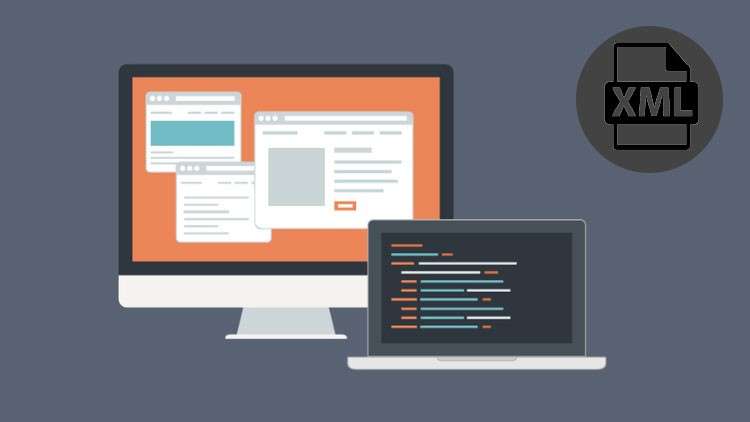
Learn XML, XML DTDs, Android Web service, Parsing XML API, Web Development, JavaXSD, XML Schema and much more.
What you will learn
Learn XML and make your web applications, including websites, more powerful, versatile and smarter
Learn XML DTDs, Android Web service, and Parsing XML API
Understand Web Development, Java, XSD, and XML Schema
Description
Even if you are a complete beginner to web development, you would have definitely heard of the term ‘XML’. This and Java would probably be two of the biggest buzzwords in the late 1990s and early 2000s, when the internet was rising rapidly and so were its development standards.
XML is one of the most hyped terms in web development, but how important is it? How big a deal is XML for web development? In the shortest words, XML makes your web applications, including websites, more powerful, versatile and smarter. This guide removes all the hype surrounding XML that has characterized most of its discussions. It instead focuses on delivering the knowledge and background needed to master this markup language.
Here, we give you a general introduction to our training program for XML for web development. To begin with, let’s start with what XML is all about.
About XML For Web Development
What is XML? Let’s start with its full-form, shall we? XML stands for Extensible Markup Language. To make things simple, let’s break this down to an explanation of each of the three words.
Extensible: Above all, XML is an extensible language. This means that you have the freedom to define your tags and the order of their occurrence, and how they are displayed and processed. In other words, extensibility here refers to how XML lets you extend your idea of a document. It could be transient data flowing between systems, like Web Services, or it could be a traditional file in a server.
Markup: The above paragraph talked about defining tags. And tags make up most of this language. In XML, these tags are referred to as elements, and the elements made in XML are very similar to those you make using HTML. However, as mentioned above, the key different between the two markup languages – XML and HTML – is that XML lets you define your own elements.
Language: Finally, despite their differences, XML and HTML share a lot of similarities, which is a good thing considering you can easily switch from HTML to XML. However, XML is a lot more flexible than its predecessor. And it is also important to note that XML is more than just a simple markup language. It is a meta-language, in that it lets the user define or create other languages. XML has helped programmers create other languages like the mathematical markup language, MathML, and RSS. It has also been used to make tools such as XSLT.
Why is XML important?
Now that you know a little about what XML is, let’s look at why it is so important for web development. XML is needed because it does what HTML cannot do. HTML was designed specifically for describing documents to display them on a web browser. Apart from that, HTML can make it rather difficult to do more complicated things, like displaying documents on a mobile device or translating content to other languages. Its main purpose is to create and share web documents quickly.
On the other hand, XML is more than just about the web. It is also usable for other purposes, beyond just serving as an interface between the user and the content. For instance, XML is used by Web Services to send responses and requests. HTML rarely provides information on the structure of a document or the reasoning behind this structure. In simple terms, XML is a data description language and HTML is a presentation language.
Content